Artifact in the Spotlight 2019
In 2019, the NMAS collections staff highlighted the following artifacts from the museum's collection.
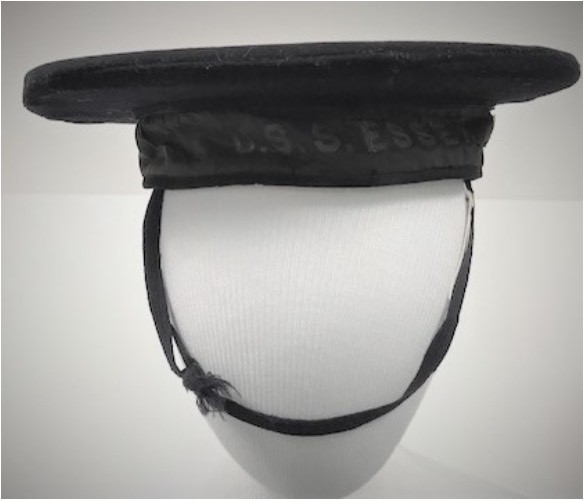
June 2019
Chief Pharmacist Mate Gennaro Lavieri Flat Cap. For museums, rarely are artifacts simply 3D objects we keep on shelves. They are parts of whole chapters to stories and connections to the past. This is what make them come alive. Objects like this flat cap are part of our story.
This flat cap belonged to Gennaro Dominic Lavieri, an Italian immigrant who joined the Navy during WWI at the age of twenty-five. According to his service record, which was also donated, we know his physical description, that he was married with one child, his profession, and the ships on which he served. During the war, Lavieri served as a Chief Pharmacist Mate on the USS Essex (III), here at Naval Station Great Lakes, and then in Chicago at the Naval Auxiliary Reserve School.
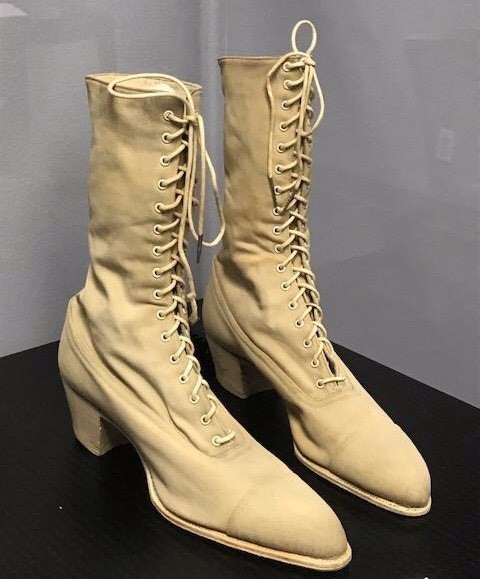
July 2019
1917 Navy Nurse Boots. Women have played an important role in US Naval history since the beginning, but it was not until 1908 when the "Sacred Twenty", a group of Navy nurses, were appointed that women were serving in official capacities.
During World War I women were allowed to serve in other, more clerical tasks by becoming Yeomen. Then in 1942, women were allowed to enlist in the WAVES program. WAVES stood for Women Accepted into Volunteer Emergency Service and allowed women to serve as commissioned officers and as enlisted personnel. These early Navy women paved the way for future generations of women sailors.
NMAS is fortunate enough to have one of the largest women's Navy uniforms collections in the country. These nurse's boots date from 1917 and were part of the World War I Navy Nurse Corps uniform. Uniform regulations were loose and shoes were not specifically designated until after World War I.
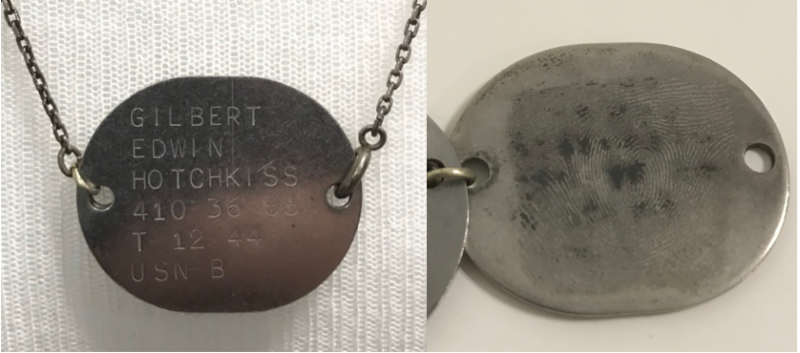
August 2019
Gilbert Edwin Hotchkiss ID Tags. At just 23 years old, Gilbert Edwin Hotchkiss of Morris, Kansas enlisted into the US Navy on 05 December 1939. Like many before him and many more after him, Gilbert went through bootcamp at Great Lakes, and by March of 1940 he was a Seaman 2nd class stationed at Naval Air Station San Diego.
In our permanent collection, we have his ID tags, also called Dog Tags. While this particular set were not his first, they were issued after December 1944, they were nonetheless important. On the front is listed: First Name, Middle Name, Last Name, Navy Service Number, Tetanus toxoid and date of shot, Branch and Blood Type. All the information needed to help identify him, and potentially save his life.
On the back, is an etching of his right index fingerprint. This set of tags are clipped together to help protect the etching.
It is because of our generous donors that we are able to carryout our mission and help tell the stories of sailors like Gilbert.
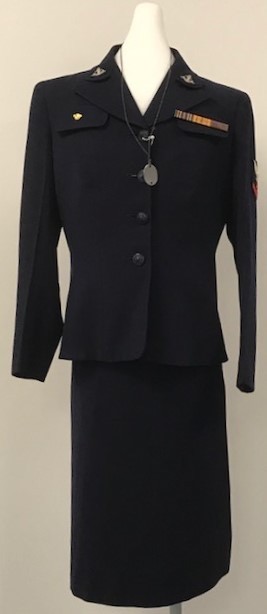
September 2019
Pharmacists Mate 3rd class Ardell Adelaide WAVE Uniform. This month's Artifact Spotlight is Ardell Adelaide Knopf's WAVES dress blue uniform, complete with Jacket, Skirt, and Dog Tags.
Ardell Adelaide Knopf was born on July 27th, 1923 in Minnesota. She was one of two children with an older brother Marvin born in 1921. In 1927 the family moved from Minnesota to Big Stone City, South Dakota where Ardell and Marvin grew up and went to school. During World War II both brother and sister joined the United States Navy. Ardell served with the Navy's Women Accepted for Volunteer Emergency Service or WAVES for short. She served from 1943 until 1946 as a 3rd class Pharmacists Mate Also, serving in the United States Navy was William Middleton Courtney. William served from July 1940 until July 1946 as a 1st class Pharmacists Mate. On August 10, 1943 in Grant, South Dakota William and Ardell were married. After the war at some point in their life together William and Ardell moved to California where they are both buried.
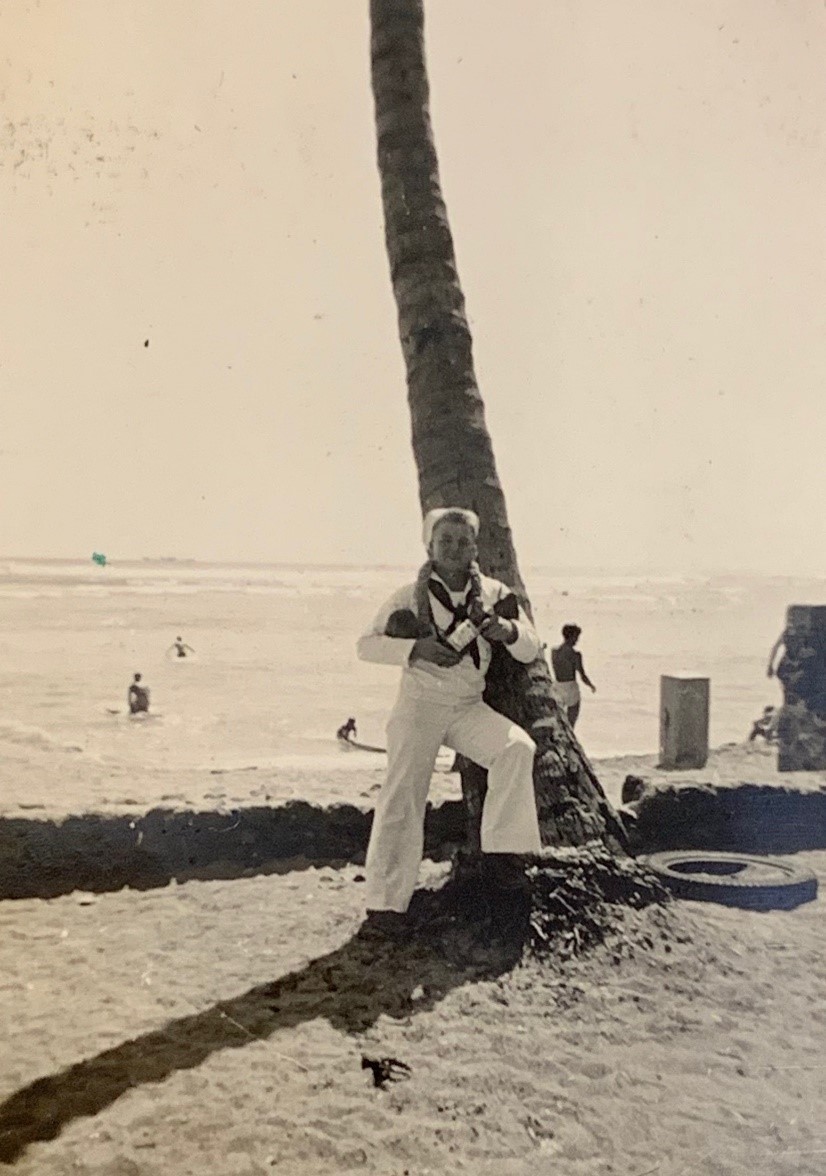
October 2019
Photograph of Fireman 1st Class James Carlton Stoner. Photos like this one of Fireman 1st Class James Carlton Stoner holding rum and coconuts at Waikiki offer us a light-hearted glimpse of a sailor’s life during World War II.
Stoner was born on 12 May 1917. He attended Citizens Training Camp at Ft. Benjamin Harrison before enlisting in the Navy for six years starting on 8 November 1939. After eight weeks of sailor training at Great Lakes, Stoner was assigned to the USS Cincinnati (CL-6) out of San Diego. From there he went to Hawaii, Guam, the Panama Canal, and other locations. Stoner was a Motor Machinist's Mate 1st Class by the time he was discharged on 6 December 1945.
After Stoner's death in 1980, his family donated some of his uniforms and a scrapbook from his time on the USS Cincinnati to the National Museum of the American Sailor. This photo is from his scrapbook.
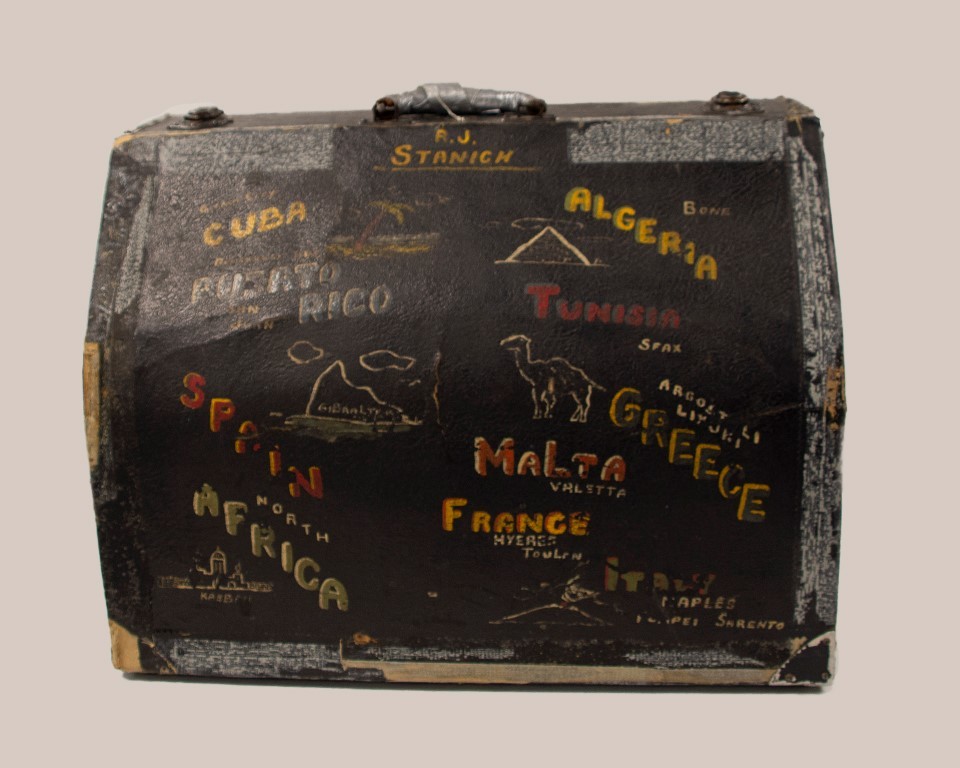
November 2019
Accordion Case. Born in Ohio and the oldest of four brothers, all of whom served in the military, Robert Stanich enlisted on September 6, 1942. Robert was in the United States Navy for 20 years serving through World War II, Korea, and Vietnam. He retired from the service in 1962 and continued working as an aircraft mechanic in his civilian life. One of Robert's favorite past times on ship and throughout his life was playing the accordion. Throughout his service he carried his accordion, kept safe in the case pictured. Robert painted this case with names and symbols to represent the ports and places he visited during his service.
This case, along with the accordion that once was housed inside, where such a part of his life that they were displayed by his family at his funeral. We are honored to have them as part of our collection.
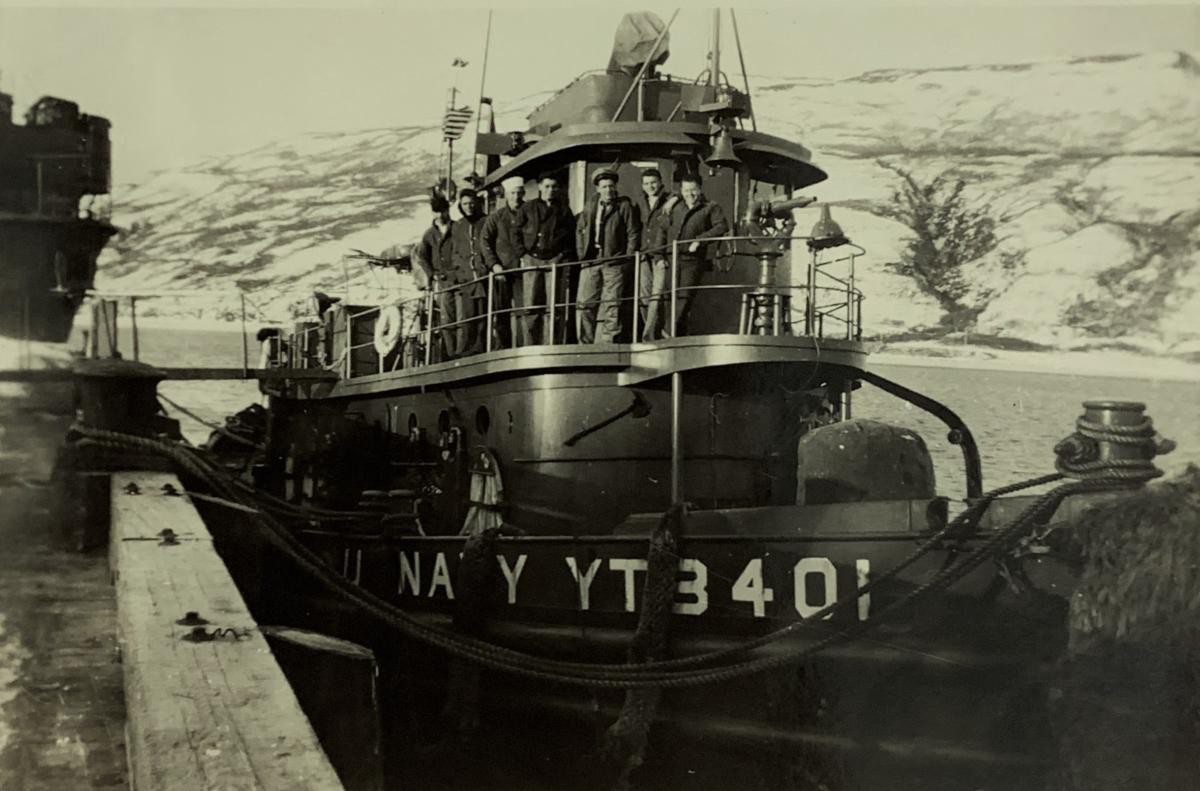
December 2019
Photograph of Chief Boatswain's Mate Joseph Triolo. Enlisting in the Navy in 1937 opened up a world of adventure away from the coal mines of his hometown in West Virginia for Chief Boatswain's Mate Joseph Triolo. Triolo was serving on the USS Tangier (AV-8) when Pearl Harbor was attacked on December 7, 1941. His commanding officer commended him for "his courage, skill, and devotion to duty, while in action against strong enemy strafing, bombing and torpedo attacks."
Triolo reenlisted in the Navy during World War II and continued to serve after the war ended. His many assignments took him to various locations including Kodiak, Alaska. He ended his naval career as a recruiter at Naval Station Great Lakes and the museum is proud to preserve artifacts related to his service.
You can learn more about BMC Triolo's life and naval career by visiting the Library of Congress Veteran's History Project webpage which interviewed him about his experiences on November 11, 2013.


